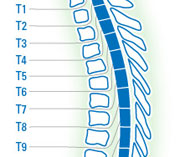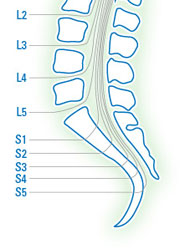Skin Care
Determined2Heal Tips:
How is my skin different from before my injury?
Click Here — Learn more about skin and watch thousands of SCI videos on SPINALpedia!
|
Click Here — Check out our Skin Care After a Spinal Cord Injury Pinterest board |
Click Here — Check out our Stay Hydrated After a Spinal Cord Injury Pinterest board |
Sensation – Having no ability to feel certain parts of your body can cause serious problems. Without the ability to react to pressure, temperature, and pain an individual’s body can unfortunately breakdown without knowing.
Temperature regulation – There is less sweat to evaporate and cool you below your level of injury. You may have excessive sweating above your level of injury.
Fluid regulation and circulation – If you don’t move your muscles through stretching, exercise or spasticity, you can get edema, which is a pooling of the fluids that causes your tissues to swell.
Unfortunately, individuals with spinal cord injuries don’t move as much because of this their blood doesn’t circulate as well. Also, a person with a spinal cord injury does not have as much muscle as before to be able to provide padding between the bones and skin. Because of this bony areas of the body are more prone to skin breakdown.
Spasms can cause shearing or can cause you to bump into things and break down your skin. Most importantly, your skin needs a lot of attention to prevent pressure sores.
Why do I need to be so careful about skin care?
-
Problems with the skin can cause AD (autonomic dysreflexia).
-
Pressure sores can develop very quickly to a serious degree. They take weeks to months to heal and if not properly attended may lead to an infection. An infected pressure sore could cause you to have a limb amputated, or even death.
-
To look and feel healthy, your skin must be well cared for.
What do I need to look out for?
Any irregularities in the skin are cause for concern. Red marks, discolorations, rashes, cuts, scrapes, and bruises.
What is a pressure sore?
It is skin breakdown caused by unrelieved pressure that damages the skin and underlying tissue. There are four stages of pressure sores:
-
Stage one is a red area that does not resolve when pressure is relieved after 30 minutes, skin is intact with no open areas.
-
Stage two is a break in the skin which turns into a blister, an abrasion, or a small open area.
-
Stage three is a break in the skin including the dermis and the subcutaneous fat.
-
Stage four is a break in the skin including the subcutaneous fat and/or the muscle/bone.
What do I do if I have a red mark or a pressure sore?
Relieve the pressure by getting off the area. You should stay off the area until it clears. If the sore is in an area that you sit on – hips, buttocks, back or legs, stay on bed rest until the red area clears. Remember when in bed to reposition every two hours to avoid any redness in any other areas.
If the red area does not clear within 24 hours call your healthcare professional. If you have any open areas on your skin, stay off the area and call a healthcare professional immediately.
How can I prevent skincare problems?
Tips for inspection
-
Check skin twice a day – before you get out of bed and before you go to sleep. If you ever had a sore in a specific area, remember to check those areas most frequently.
-
Check all your bony places below your level of injury – ankles, elbows, heels, hips, and tailbone.
-
Feel over bony areas for lumps or spots that are firmer than the skin around it.
-
Always check the fit of your clothes, shoes and equipment to be certain that they are not too tight.
Avoid the following:
-
Tight shoes.
-
Thick seams, especially on blue jeans.
-
“Wedgies” – binding in the groin area.
-
Moisturizing ointments with petroleum jelly, lanolin or zinc oxide.
-
Being underweight because bones apply pressure on skin
-
Being overweight because your weight will apply undue pressure on skin.
Make sure:
-
Use sunscreen when out in the sun.
-
Keep your skin clean and dry.
-
Wash areas where you sweat so you don’t develop rashes.
-
If you have skin folds, clean and dry under them well.
-
Your shoes should be 1.5 to 2 sizes too big.
-
The straps that hold your drainage bag should not be too tight
-
You should buy pants in larger sizes then you need.
-
You should be turned in bed every two to three hours.
-
You should do a pressure relief every 15 minutes.
What are the most important parts of your skin to protect?
-
Bony areas
-
Areas of previous sores
-
Areas that endure pressure throughout the day
Is there a certain type of clothing that is better to wear than others?
Avoid clothing with thick seams and clothing that is too tight.
Are there any products that specifically address skincare maintenance?
Seating cushions for wheelchairs are designed to distribute weight evenly. Beds are made that have air flowing through them to avoid pressure sores.
Why do I need to be turned at night?
It helps with circulation and prevents skin breakdown which keeps you from developing pressure sores. It is also important to be turned at night because your lungs have less of a chance of building up mucus which can lead to pneumonia.













